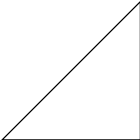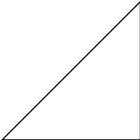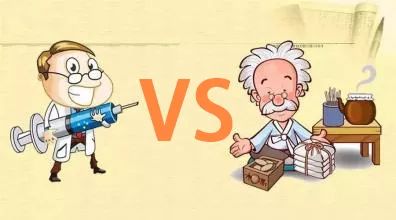

Misunderstood Advantages of Traditional Chinese Medicine Diagnosis
Many hospitals in mainland China have departments that combine Western and Traditional Chinese Medicine, primarily using Western medical diagnostic instruments and then prescribing Traditional Chinese Medicine. This concept completely denies the diagnostic capabilities of Traditional Chinese Medicine.
The concepts of disease in Western and Traditional Chinese Medicine are fundamentally different; Western medicine defines disease by symptoms, while Traditional Chinese Medicine seeks to identify the root causes of illness through “syndrome differentiation and treatment” based on surface symptoms, finding the underlying issues within the internal organs. This is encapsulated in the saying, “Symptoms are in the extremities and facial features, while the disease resides in the internal organs.” Treatment focuses on the disease itself, hence the saying, “treat the disease, not just the symptoms.”
For example, gout is seen in Western medicine as pain located in the joints, but in Traditional Chinese Medicine, the pain is merely a symptom. According to Traditional Chinese reasoning, the primary issue of gout is the accumulation of uric acid crystals in the joints, which injures the joints due to their sharp shape, leading to the disease. The formation of uric acid is primarily due to long-term overexertion of the body’s energy or emotional factors that create liver heat, resulting in increased uric acid levels in the urine; thus, liver heat is one of the causes. Additionally, poor blood circulation in the joints leads to the gradual deposition of uric acid, forming uric acid crystals.
Poor blood circulation mainly stems from excessive pericardial effusion, which in turn is caused by spleen deficiency. Therefore, spleen deficiency is another root cause of gout. Spleen deficiency originates from bodily inflammation, which may arise from gastrointestinal diseases or gynecological issues in women (kidneys). Thus, the symptoms of gout are actually due to long-term excessive liver heat and spleen deficiency. The precondition for liver heat and spleen deficiency is invariably insufficient Qi and blood. The liver and spleen relate to the internal organs, while insufficient Qi and blood indicate energy issues; these two aspects are the primary indicators for diagnosis in Traditional Chinese Medicine, and all diagnoses must identify problems within the internal organs and Qi and blood.

This example illustrates the differences in diagnosis between Traditional Chinese Medicine and Western medicine, as well as how the treatment direction in Traditional Chinese Medicine is rooted in in-depth diagnostic reasoning. The current approach of combining Western and Traditional Chinese Medicine discards this reasoning process, directly defining diseases based on superficial symptoms diagnosed by Western medical instruments, and then formulating treatment plans based on these definitions. This method inevitably limits treatment to merely alleviating superficial symptoms, without addressing the true root of the disease, thereby completely losing the primary advantage of Traditional Chinese Medicine.
The four diagnostic methods and eight principles in Traditional Chinese Medicine, along with the concepts of Yin-Yang and the Five Elements, primarily construct a systemic model of human functioning. Traditional Chinese Medicine practitioners use the patient’s surface symptoms, current environmental conditions, and emotional changes to fit into this model, reasoning to identify potential causes of illness. Once the cause is identified, the disease can be eliminated. There are many methods to eliminate disease; it could be due to inappropriate clothing, in which case the prescription should focus on correcting attire. It may also stem from poor lifestyle habits, emotional fluctuations, excessive fatigue, or external factors like wind and cold, etc. Treatment strategies and methods are formulated based on the identified causes; usually, once the cause is found, the treatment method becomes straightforward, and sometimes no medication is even necessary. For instance, if poor lifestyle habits are the primary cause, correcting these habits is something the patient can do; the doctor, aside from providing verbal advice, does not need to prescribe medication. One could say that the true value of Traditional Chinese Medicine lies in its diagnosis.
The ideal direction for integrating Western and Traditional Chinese Medicine should involve adopting the concept of using instruments from Western medicine while developing specific instruments for Traditional Chinese Medicine that assess the conditions of the internal organs, meridians, and Qi and blood energy indicators, quantifying these metrics. Based on the detected data and charts, diseases can be redefined according to Traditional Chinese Medicine theories. Subsequently, treatment plans that can genuinely cure diseases should be formulated based on these new definitions, rather than the current practice of directly applying Western medical instruments and definitions to diagnose diseases and then prescribing Traditional Chinese Medicine names, which only targets the symptoms of diseases and ultimately loses the greatest value of Traditional Chinese Medicine.